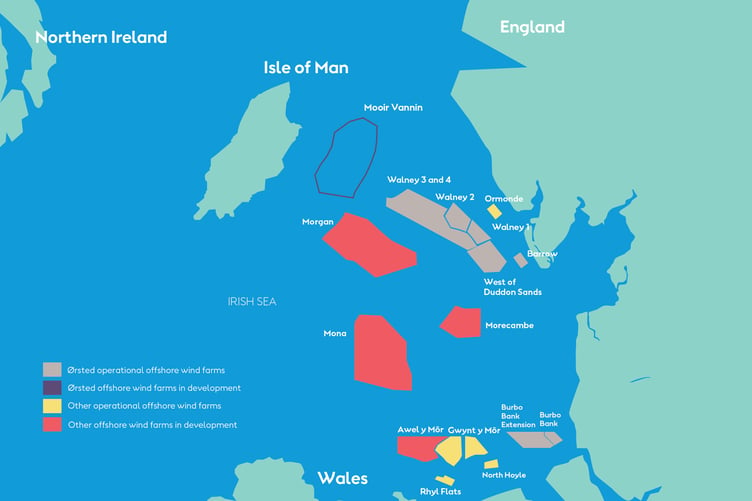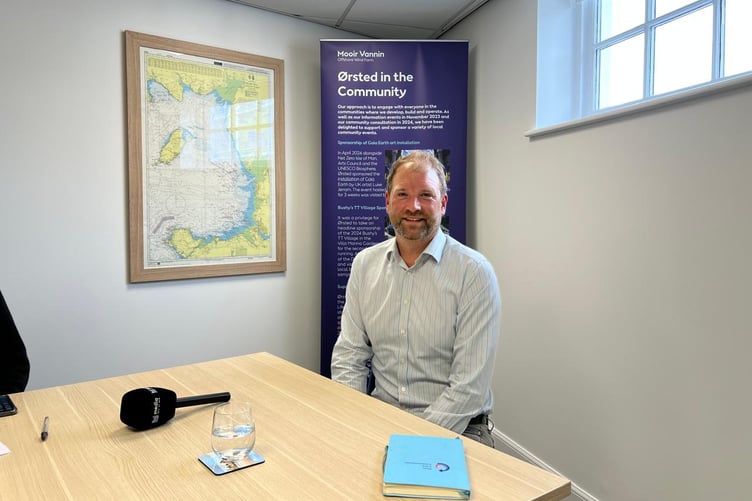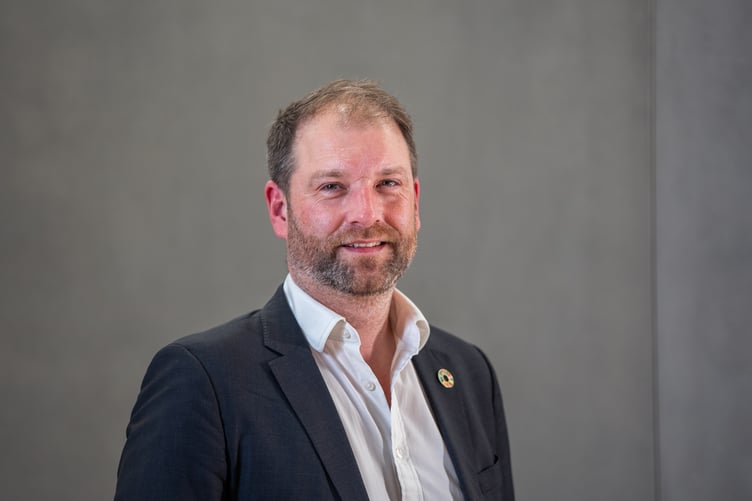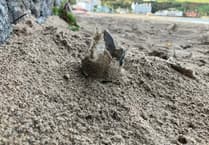Ørsted has revealed it will lay the cable from its proposed Mooir Vannin offshore wind farm to supply the Isle of Man directly with electricity.
But the renewables company says it is up to Manx Utilities to provide the on land infrastructure to feed it into the island’s grid.
Ørsted has already revealed Mooir Vannin would provide around £2billion in financial benefits for the Isle of Man during its 35-year operational lifetime.
This estimated figure is based on expected revenues from taxation and seabed rental which would be paid directly to the Isle of Man Treasury.
A Community Investment Fund will also be set up by Ørsted, giving up to £1.5million per year during the wind farm’s first 15 years of operation which would provide £22.5million to help communities across the island.
Ørsted’s development project director Jamie Baldwin explained the Isle of Man Government could either have electricity from the wind farm directly fed to the grid or buy it from the UK Government.

‘But also the opportunity exists for us to supply directly to the island enough energy to support the whole of the island.
‘We will fund this object entirely. So there is no direct investment or cost to government or the taxpayer.
‘So, if we put in our planning application a cable route that comes back to the island, and we would commit to laying that cable, if that's what the Isle of Man government would prefer.
‘There are some regulatory challenges and hurdles that we need to overcome with the government around that. But we definitely want to have that option to provide the island directly from wind farm and to cover the whole demand for the island.
‘We can lay that cable back to the island. After that it is Manx Utilities’ responsibility, as I understand.’
Beyond the £2bn in tax, Mr Baldwin also expanded on the wider economic benefit of Mooir Vannin.
‘In terms of the supply chain and building that clearly there will be opportunities and jobs created,’ he said
‘From a construction perspective, the island is probably too small to manage that, and we would be looking to construct and use established ports in the UK.
‘But there's definitely opportunities for jobs on an ongoing basis, and we will have an operational and maintenance base here at Douglas Harbour.’
In 2014 the Isle of Man Government issued a tender for leasing an area of its territorial seas for offshore wind as part of its first Marine Plan.
An Agreement for Lease was signed in 2015, and since then Ørsted has been developing proposals for the Mooir Vannin Offshore Wind Farm off the island’s east coast.
It would be the first offshore wind farm in Manx territorial waters which extend to 12 nautical miles from the coastline.
Ørsted’s proposal could have around 87 wind turbines positioned between six and 12 nautical miles off the island’s east coast, extending from approximately Maughold Head to Douglas Bay.
Its latest consultation report from March 2025 shows that the turbines could reach up to 350 metres in height, with maximum blade lengths of 148 metres.
Mr Baldwin says it is unlikely they will reach such a height.

‘We've reduced the number of turbines down from 100 to 87 and we've slightly reduced the range of the turbines.
‘I don't seriously believe we will be close to that kind of maximum design but this is a project which takes years to develop and it gives us some flexibility as to what the technology for wind turbines and the scale of the wind turbines might be in six to seven years’ time.
‘The Irish Sea already has several large operational wind farms and four more in development with offshore wind power one of the fastest growing sources of renewable energy in the British Isles.
‘You can see from Douglas in the distance some of the existing turbines in the Irish Sea, so they will, they will be visible. I think it's really important that we are open and honest about that visual impact, but also that we weigh that up against the clear, financial, socio economic, environment, environmental benefits.’
Another issue is the environmental impact of such a large wind farm, particularly on marine life and birds.
‘In terms of birds, the best way of minimising any impact is the siting of the wind farm,’ he explained. ‘We've worked very closely with both the Department of Enironment, Food and Farming (DEFA) but also Manx Wildlife Trust to get their feedback.
‘We're confident that those impacts have been minimised along with during the construction period, which is typically a four to five year period.
‘We will need to work closely with DEFA to ensure we minimise any impacts from things like piling foundations and underwater noise and there's some quite stringent regulations in place in Europe and in the UK.’

There are a growing number of wind farms being developed or proposed in the Irish Sea which could affect shipping lanes, such as the Steam Packet ferries.
‘We've got direct relationships with all the shipping lines,’ Mr Baldwin explained, ‘including the Steam Packet. We've had positive discussions with them and with fishing organisations which have been going on for a couple of years.’
Ørsted has no plans for any further wind farms and has not been approached by the Isle of Man Government to tender for any.
‘I think that is probably a question for government,’ Mr Baldwin said. ‘We have not had any kind of further discussions about future plans.’
Mr Baldwin also said issues with US projects around the supply chain and the decision not to sell assets there, which led to a fall in the company’s shares, will not affect the Mooir Vannin scheme.
‘We announced our half yearly figures which were pretty strong,’ he said. ‘Mooir Vannin is high on the priority base for Ørsted. It is funded. We are fully committed to this project.’

.jpg?width=209&height=140&crop=209:145,smart&quality=75)
.jpeg?width=209&height=140&crop=209:145,smart&quality=75)
